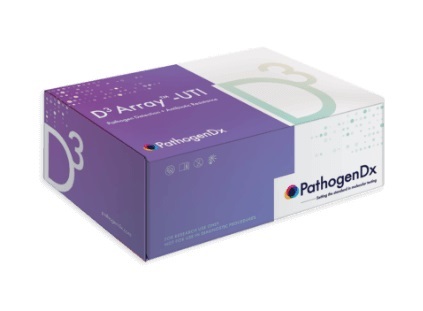Multiplexed PCR Test for Pathogen Detection and Antibiotic Resistance Helps Deliver Rapid UTI Treatment
Posted on 09 Feb 2024
Individuals suffering from urinary tract infections (UTIs) face the risk of continued pain and discomfort, chronic infections, kidney infections, and in severe cases, sepsis. This makes timely and accurate diagnosis of UTIs crucial. Now, a novel multiplexed PCR test capable of detecting 26 pathogens and 12 antibiotic resistance gene markers can assist clinicians in administering rapid UTI treatment.
PathogenDx (Scottsdale, AZ, US) has launched D3 Array-UTI which is based on the company’s patented Dynamic Dimensional Detection (D3 Array) technology. This cutting-edge multiplexed molecular diagnostics technology offers triple-redundant testing for quality assurance and provides both qualitative as well as quantitative results in a single reaction. Additionally, it offers automated, cloud-based data analysis, reporting, and management. PathogenDx's advanced microarray testing platform is designed for human diagnostics (for research use only), as well as for the food and agricultural industries. It can rapidly detect and identify up to 50 pathogens simultaneously in a single test within six hours. PathogenDx's molecular testing products are revolutionizing traditional pathogen detection methods to identify and quantify pathogens impacting human health, ecosystems, and the environment.

The D3 Array-UTI is the newest member of the testing platform that combines a unique microarray architecture that significantly increases sensitivity, with the detection and discrimination of pathogens and antibiotic-resistant gene markers via rapid concurrent room temperature hybridization. The array is equipment agnostic, making it compatible with routine molecular instrumentation and existing workflow. D3-Array-UTI utilizes a foil-sealed 96-well plate, allowing labs to use only the wells needed without incurring additional cost and waste for unused wells on a plate. Data analysis and reporting is automated using PathogenDx's Augury proprietary cloud-based data analysis and data management tool, reducing the time and cost of deciphering results. These technological features will help advance UTI diagnosis, enhancing both patient care and time to treatment.
"D3 Array-UTI is transformative in the world of diagnostics, superseding current approaches by improving the value proposition for clinical labs on multiple fronts; from optimizing the cost of testing, streamlining analytics and reporting, concentrating all targets in a single well in triplicate, delivering higher throughput without compromising content, and ensuring robust results,” said PathogenDx Co-founder and CEO, Milan Patel. “This technology is a step forward in addressing some of the inherent challenges laboratories are currently facing in running multiplex qPCR panels for UTIs, and I am delighted to say that laboratories, physicians, and ultimately patients will benefit from these advances."














